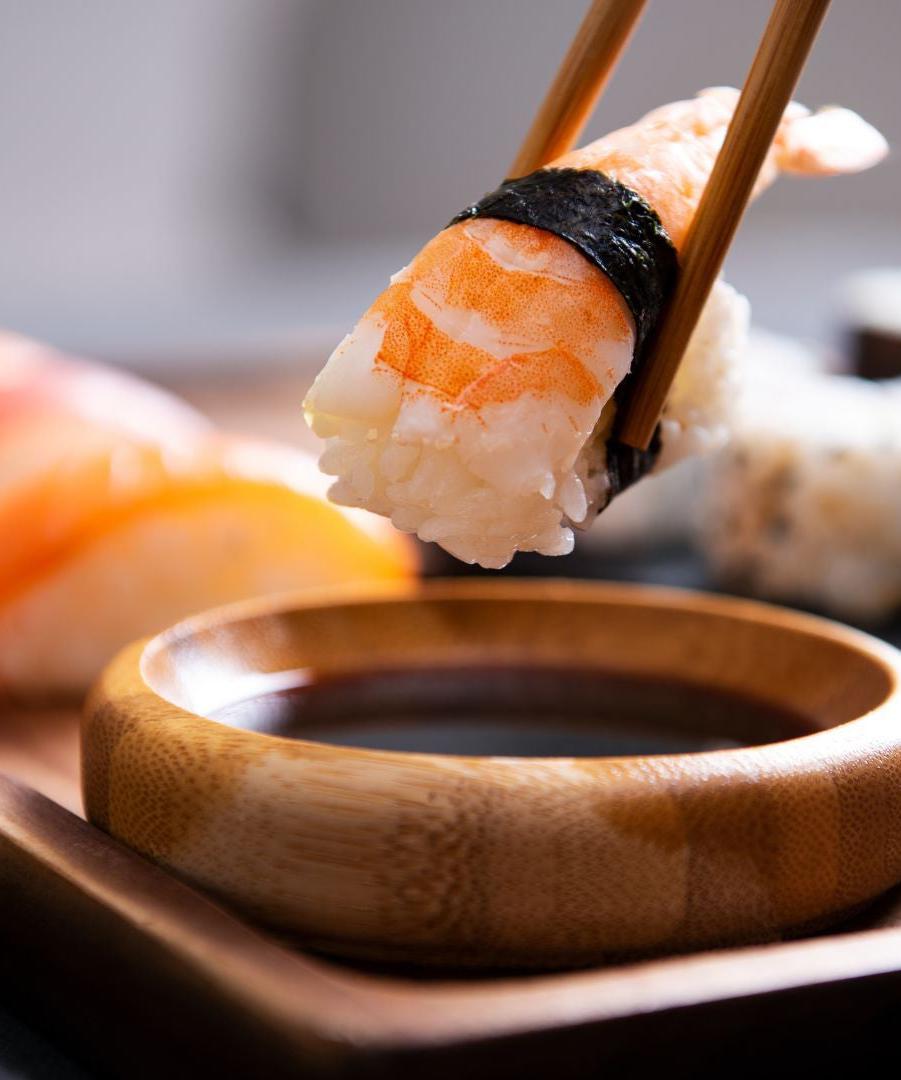Introduction to Soy Sauce: A Brief Overview
Did you know that not all soy sauces are created equal? Today, we’re diving deep into the world of Chinese vs Japanese soy sauce, or as the Japanese call it, “shoyu.”
Soy sauce originated in China over 2,500 years ago and later made its way to Japan. In both countries, it’s more than just a condiment, it’s a symbol of their culinary artistry.
In Asia, soy sauce is like the salt of the Western world but with a lot more character. It’s the backbone of many dishes, offering that umami flavor we all crave. But what sets Chinese and Japanese soy sauce apart? Is it the flavor, the ingredients, or maybe the brewing process? Stick around, and you’ll find out.
So, why should you care about the difference between Chinese and Japanese soy sauce? Well, using the wrong type could be like putting ketchup on pasta. A culinary disaster! So, let’s get to the bottom of this saucy mystery.
Chinese and Japanese soy sauces have distinct ingredients that give them their unique flavors.
In China, soy sauce is typically made from soy beans and wheat. The soybeans provide the protein, while the wheat adds a touch of sweetness. Molasses might also be added for that dark, rich color.
In Japan, the ingredient is a bit different. Shoyu often contains more wheat than its Chinese counterpart. This gives shoyu a somewhat sweeter, more balanced flavor and aroma. And if you’re gluten-free, don’t fret! Tamari is a type of shoyu made without wheat.
So, what’s the takeaway? Chinese soy sauce is generally saltier and less sweet, while shoyu offers a more balanced, umami-packed punch.
Production Process: Traditional Methods Explored
The production process for both Chinese and Japanese soy sauce involves fermentation, but the methods and duration can vary.
In China, the soybeans and wheat are first cooked and then mixed with a specific type of mold. Yeah, mold! But don’t be grossed out; it’s a good mold. This mixture is left to ferment, sometimes for months. After that, it’s pressed to extract the liquid, which is then pasteurized and bottled.
In Japan, the process is similar but with a twist. The Japanese use a particular mold called “koji” for fermentation. This mold is also used in making miso and sake. The fermentation process for shoyu is generally longer, resulting in a more complex flavor profile.
Color and Consistency: Visual and Textural Contrasts
The color and consistency of Chinese and Japanese soy sauces are as different as, well, apples and oranges.
Chinese soy sauce is usually darker and thicker. The dark soy sauce variant is almost like molasses, both in color and consistency. It’s the kind of sauce that’ll stick to your stir-fry like white on rice. Speaking of rice, dark Chinese soy sauce can even color it, giving your dish a rich, brown hue.
Shoyu is generally lighter in color and more fluid in consistency. It’s like the watercolor paint of the soy sauce world—subtle yet impactful. You won’t find shoyu dramatically changing the color of your dish, but it will add a layer of complexity to its flavor profile.
So, next time you’re in the grocery aisle, perplexed by the array of soy sauce options, just remember: Chinese soy sauce for that bold, dark splash and shoyu for a lighter, more nuanced touch.
Regional Varieties: Beyond the Regular Soy Sauce
Both China and Japan have regional varieties that offer unique twists on the standard types of soy sauce.
In China, you’ll find chinses light soy sauce (sheng chou) and chinese dark soy sauce (lao chou), but also regional specialties like “mushroom soy sauce,” which has an earthy flavor. Some areas even add spices and aromatics to their soy sauce, making it a unique condiment specific to that region.
In Japan, you’ll encounter terms like “koikuchi,” “usukuchi,” and “tamari.” Koikuchi is your standard shoyu, while usukuchi is a lighter, saltier version. Tamari, as we mentioned earlier, is the gluten-free option.
Nutritional Breakdown: Health Benefits and Concerns
We all love to indulge in delicious food, but what’s it doing to our bodies? Both Chinese and Japanese soy sauces have their pros and cons when it comes to nutrition.
Chinese soy sauce is generally higher in sodium, so if you’re watching your salt intake, you might want to use it sparingly. According to , soy sauce is low in calories and fat, providing around 8.5 calories and 0.1g of fat per tablespoon. It also contains a small amount of protein (about 1.3g per serving). However, soy sauce is not a significant source of vitamins or minerals due to the small serving sizes typically consumed. The primary nutritional concern with soy sauce is its high sodium content, with one tablespoon containing around 879mg of sodium, which is a substantial portion of the recommended daily intake. On the flip side, it’s a good source of certain antioxidants and can add a burst of flavor without many calories.
Shoyu tends to have a more balanced nutritional profile. ()It’s often lower in sodium and may contain beneficial probiotics due to its longer fermentation process. So, if you’re trying to be a bit more health-conscious but can’t give up that umami goodness, shoyu might be the way to go.
And for those who are gluten-sensitive, remember that tamari is a gluten-free alternative. () It offers a similar flavor profile to shoyu but without the wheat. So, you can have your sushi and eat it too!
Culinary Uses: Best Dishes for Each Sauce
So, you’ve got a bottle of Chinese soy sauce in one hand and Japanese shoyu in the other. Now what? Well, each has its own “best uses,” so let’s break it down.
Chinese soy sauce is your go-to for stir-fries, marinades, and dipping sauces. Its robust flavor can stand up to strong ingredients like garlic and ginger. It’s also great for seasoning fried rice or adding caramel colouring to your noodle soup.
Shoyu is more commonly used in dishes where a lighter, more subtle flavor is desired. Think sushi, sashimi, or a delicate bowl of ramen. It’s also fantastic in salad dressings or as a dipping sauce for tempura.
So, the next time you’re whipping up some Asian cuisine, think about which soy sauce will best complement your dish. It could make all the difference!
Shelf Life and Storage: How to Keep Your Soy Sauce Fresh?
Chinese soy sauce is pretty hardy. Thanks to its high salt content, it can last a long time if stored correctly. Keep it in a cool, dark place, and it should serve you well for up to two years. Once opened, it’s best to store it in the fridge to maintain its flavor. .
Shoyu, with its more delicate flavor profile, can be a bit more sensitive. While it also has a long shelf life, it’s best used within a year for optimal flavor. And just like its Chinese counterpart, once you pop that cap, into the fridge it goes!
Remember, if your soy sauce starts to smell off or if you see any mold, it’s time to say goodbye.
Popular Brands: Trusted Names in Chinese and Japanese Soy Sauce
When it comes to soy sauce, brand matters. Some have been perfecting their recipes for centuries!
In China, brand like Pearl River Bridge are household names. It offer a range of soy sauces, from light to dark, each with its unique flavor profile.
In Japan, Kikkoman reigns supreme. It’s probably the brand most people outside of Japan recognize. Their shoyu is known for its balanced flavor, making it a favorite for many dishes. And for those wondering, yes, some Kikkoman shoyu varieties do contain alcohol, but it’s a natural byproduct of the fermentation process.
Modern Innovations: New Takes on Traditional Sauces
Tradition is essential, but innovation keeps things exciting. Both China and Japan have seen modern twists on their beloved soy sauces.
In China, there’s been a trend towards low-sodium soy sauces and those infused with additional flavour like mushrooms, seafood or even truffles!
In Japan, artisanal shoyu breweries are experimenting with different fermentation methods and ingredients. Ever tried a white shoyu? It’s a lighter colour and slightly sweet soy sauce, which is perfect for dishes where a dark sauce might overpower.
Conclusion: Choosing the Right Soy Sauce for Your Needs
So there you have it, folks. Chinese and Japanese soy sauces are as different as, well, China and Japan! Whether you’re team Chinese soy sauce or team shoyu, the key is to choose the right sauce for the right dish. And remember, the best soy sauce is the one that makes your taste buds do a happy dance.




